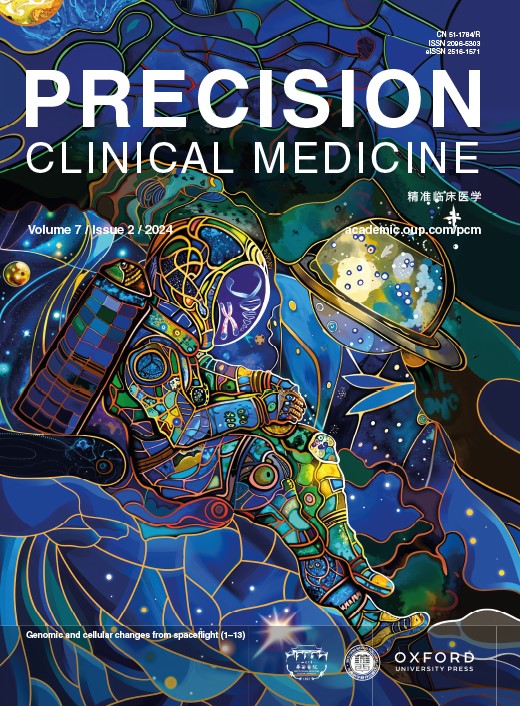通过机器学习准确预测近视发展和高度近视
IF 5.1
4区 医学
Q1 MEDICINE, RESEARCH & EXPERIMENTAL
引用次数: 0
摘要
近视是亚洲乃至全球视力受损的主要原因。然而,准确预测近视的发展和近视的高风险仍然是一项挑战。本研究旨在建立近视发展的预测模型。 我们首先回顾性地收集了来自五个独立队列的 612 530 份病历,其中包括 227 543 名从婴儿到青年的患者。随后,我们建立了一个多变量线性回归算法模型来预测近视的发展和高度近视的风险。 在内部验证集中,预测近视发展的模型的 R 平方 (R2) 值为 0.964,而平均绝对误差 (MAE) 为 0.119D (95% CI: 0.119, 1.146)。它具有很强的普适性,在外部验证集上保持了一致的性能:在验证研究 1 中,R2 为 0.950 vs MAE 为 0.119D (95% CI: 0.119, 1.136);在验证研究 2 中,R2 为 0.950 vs MAE 为 0.121D (95% CI: 0.121, 1.144);在上海儿童近视研究中,R2 为 0.806 vs MAE 为 -0.066D (95% CI: -0.066, 0.569)。在北京儿童眼科研究中,该模型的 R2 为 0.749,而 MAE 为 0.178D (95% CI: 0.178, 1.557)。预测高度近视风险的模型在内部验证集中的曲线下面积(AUC)达到了 0.99,在外部验证集中的曲线下面积(AUC)也分别达到了 0.99、0.99、0.96 和 0.99。 我们的研究证明了对近视发展和高度近视风险的准确预测,为定制个性化和优化儿童近视临床管理的策略提供了宝贵的见解。本文章由计算机程序翻译,如有差异,请以英文原文为准。
Accurate prediction of myopic progression and high myopia by machine learning
Myopia is a leading cause of visual impairment in Asia and worldwide. However, accurately predicting the progression of myopia and the high risk of myopia remains a challenge. This study aims to develop a predictive model for the development of myopia.
We first retrospectively gathered 612 530 medical records from five independent cohorts, encompassing 227 543 patients ranging from infants to young adults. Subsequently, we developed a multivariate linear regression algorithm model to predict the progression of myopia and the risk of high myopia.
The model to predict the progression of myopia achieved an R-squared (R2) value of 0.964 vs a mean absolute error (MAE) of 0.119D (95% CI: 0.119, 1.146) in the internal validation set. It demonstrated strong generalizability, maintaining consistent performance across external validation sets: R2 of 0.950 vs MAE of 0.119D (95% CI: 0.119, 1.136) in validation Study 1, R2 of 0.950 vs MAE of 0.121D (95% CI: 0.121, 1.144) in validation Study 2, and R2 of 0.806 vs MAE of −0.066D (95% CI: −0.066, 0.569) in Shanghai Children Myopia Study. Beijing Children Eye Study, the model sustained R2 of 0.749 vs MAE of 0.178D (95% CI: 0.178, 1.557). The model to predict the risk of high myopia achieved and an area under the curve (AUC) of 0.99 in the internal validation set and consistently high AUC values of 0.99, 0.99,0.96 and 0.99 in the respective external validation sets.
Our study demonstrates accurate prediction of myopia progression and risk of high myopia providing valuable insights for tailoring strategies to personalize and optimize the clinical management of myopia in children.
求助全文
通过发布文献求助,成功后即可免费获取论文全文。
去求助
来源期刊

Precision Clinical Medicine
MEDICINE, RESEARCH & EXPERIMENTAL-
CiteScore
10.80
自引率
0.00%
发文量
26
审稿时长
5 weeks
期刊介绍:
Precision Clinical Medicine (PCM) is an international, peer-reviewed, open access journal that provides timely publication of original research articles, case reports, reviews, editorials, and perspectives across the spectrum of precision medicine. The journal's mission is to deliver new theories, methods, and evidence that enhance disease diagnosis, treatment, prevention, and prognosis, thereby establishing a vital communication platform for clinicians and researchers that has the potential to transform medical practice. PCM encompasses all facets of precision medicine, which involves personalized approaches to diagnosis, treatment, and prevention, tailored to individual patients or patient subgroups based on their unique genetic, phenotypic, or psychosocial profiles. The clinical conditions addressed by the journal include a wide range of areas such as cancer, infectious diseases, inherited diseases, complex diseases, and rare diseases.
 求助内容:
求助内容: 应助结果提醒方式:
应助结果提醒方式:


